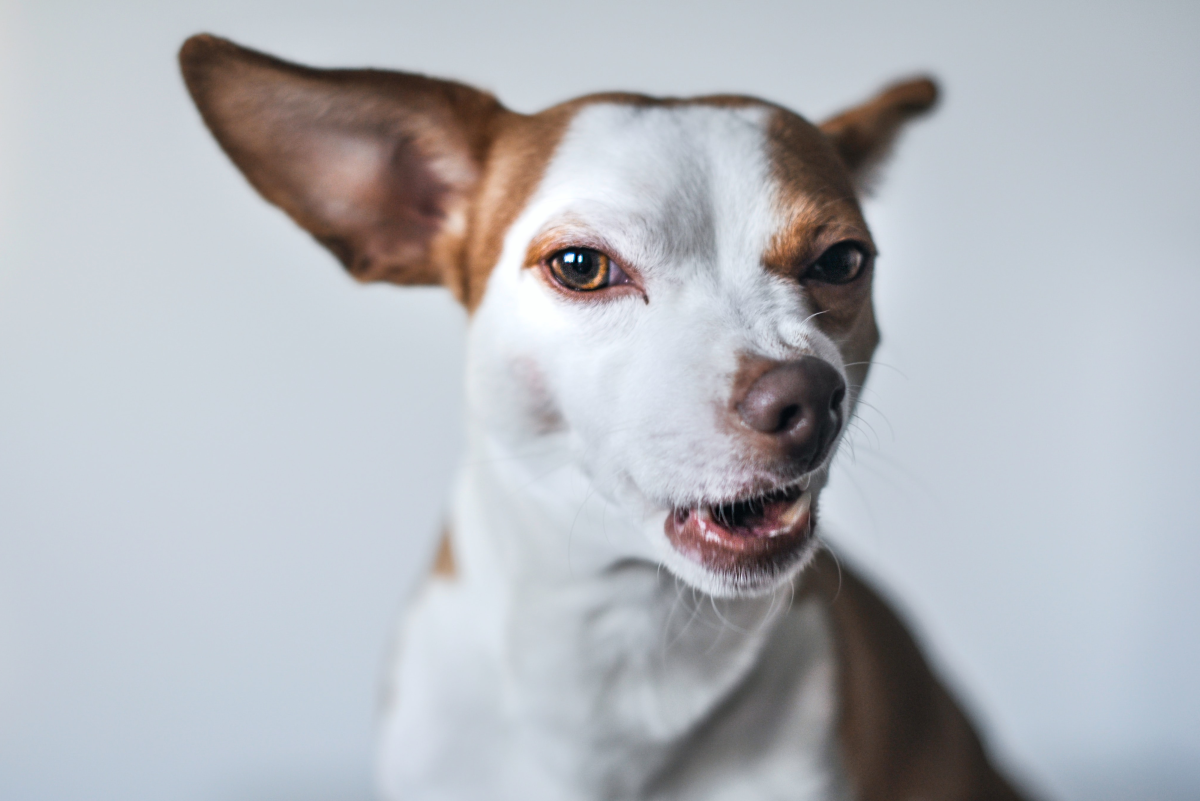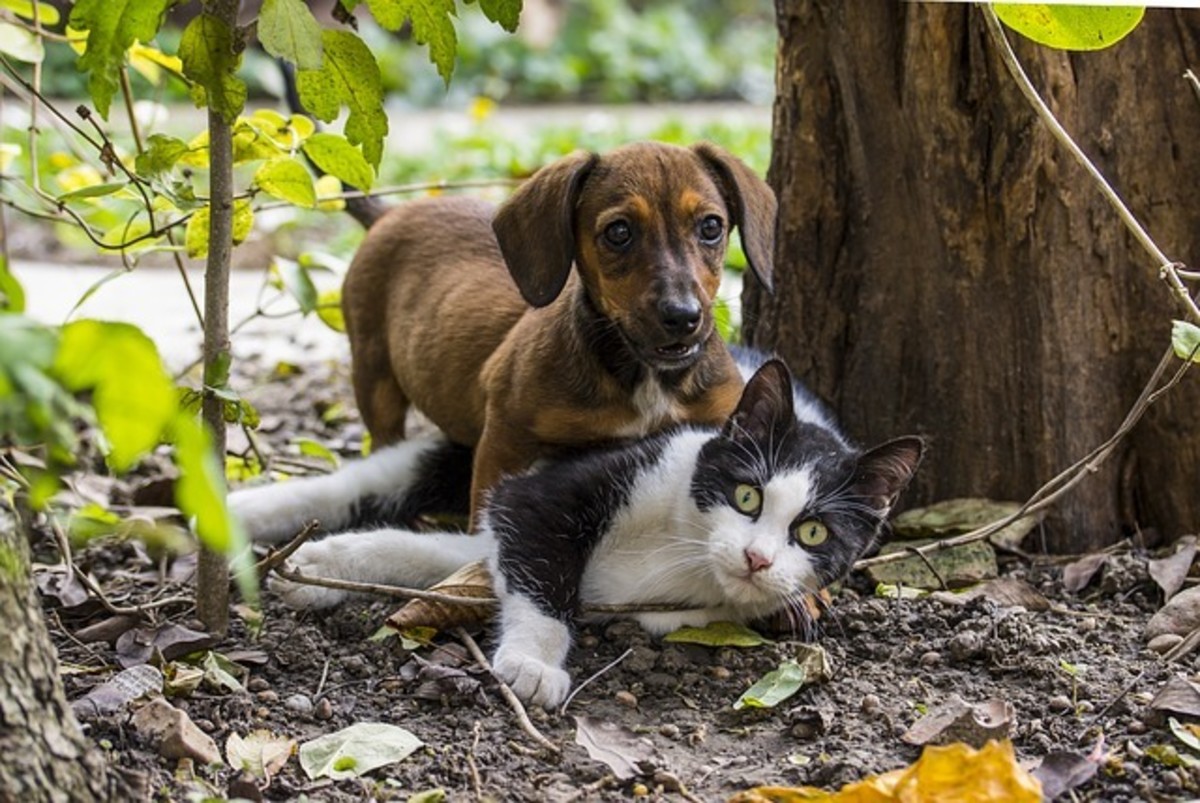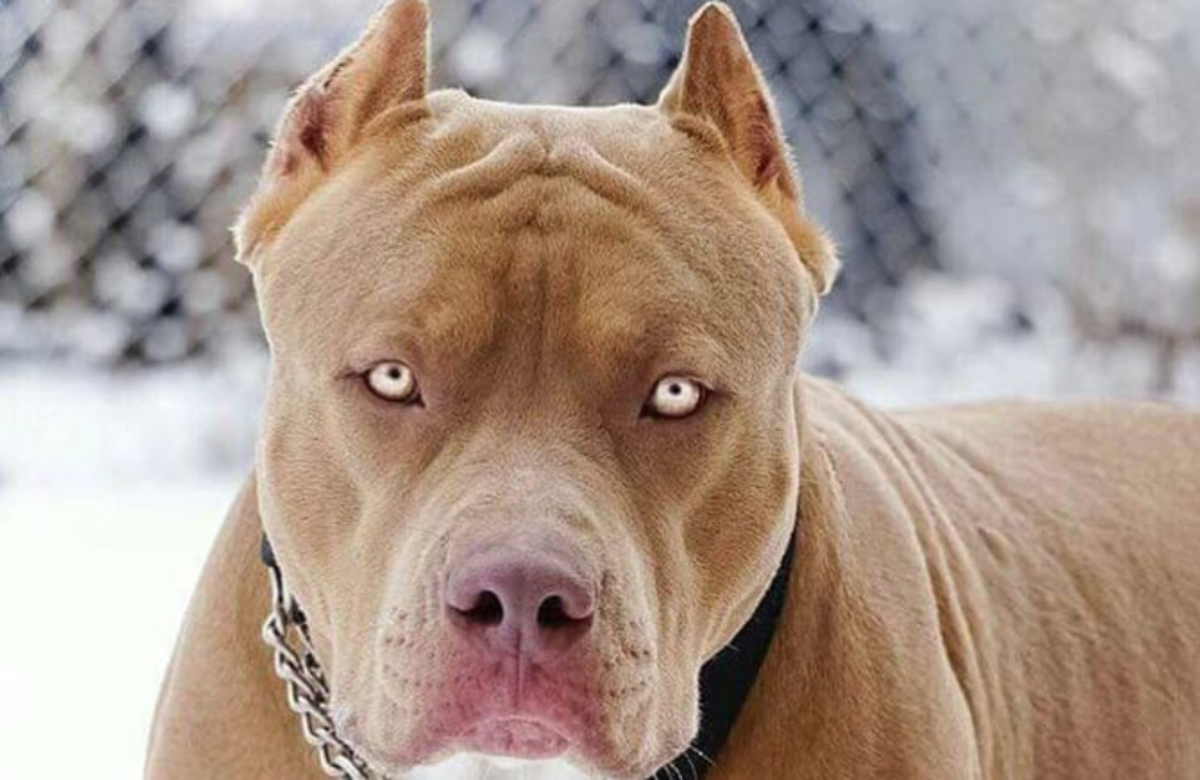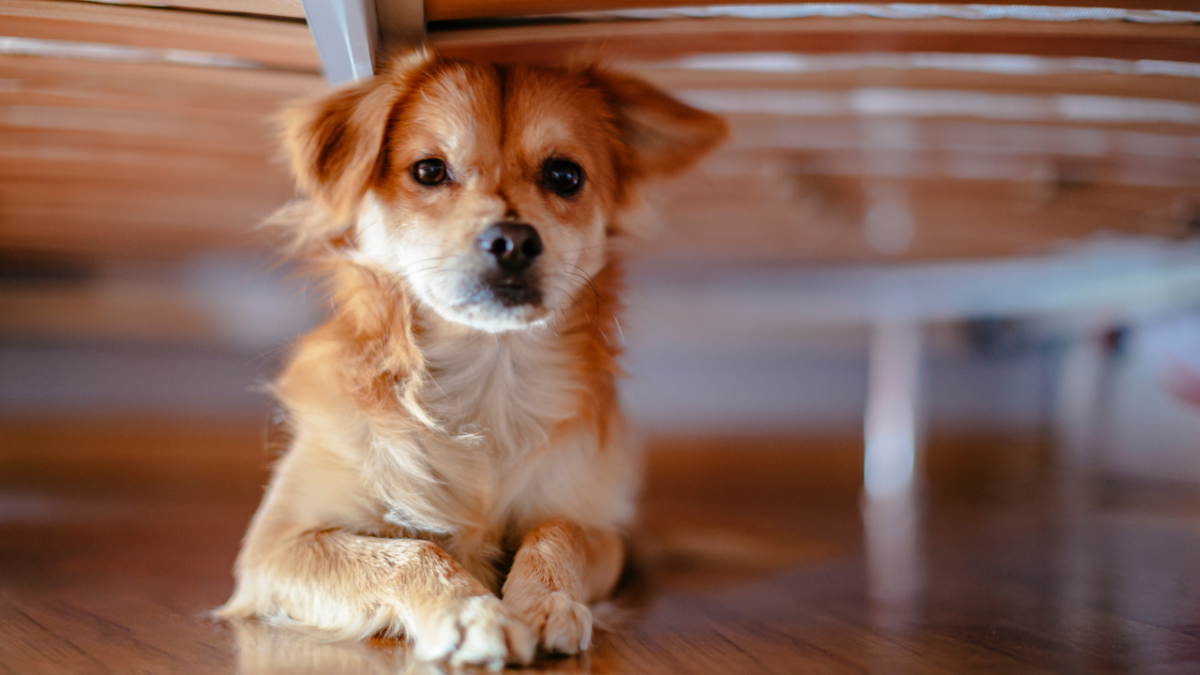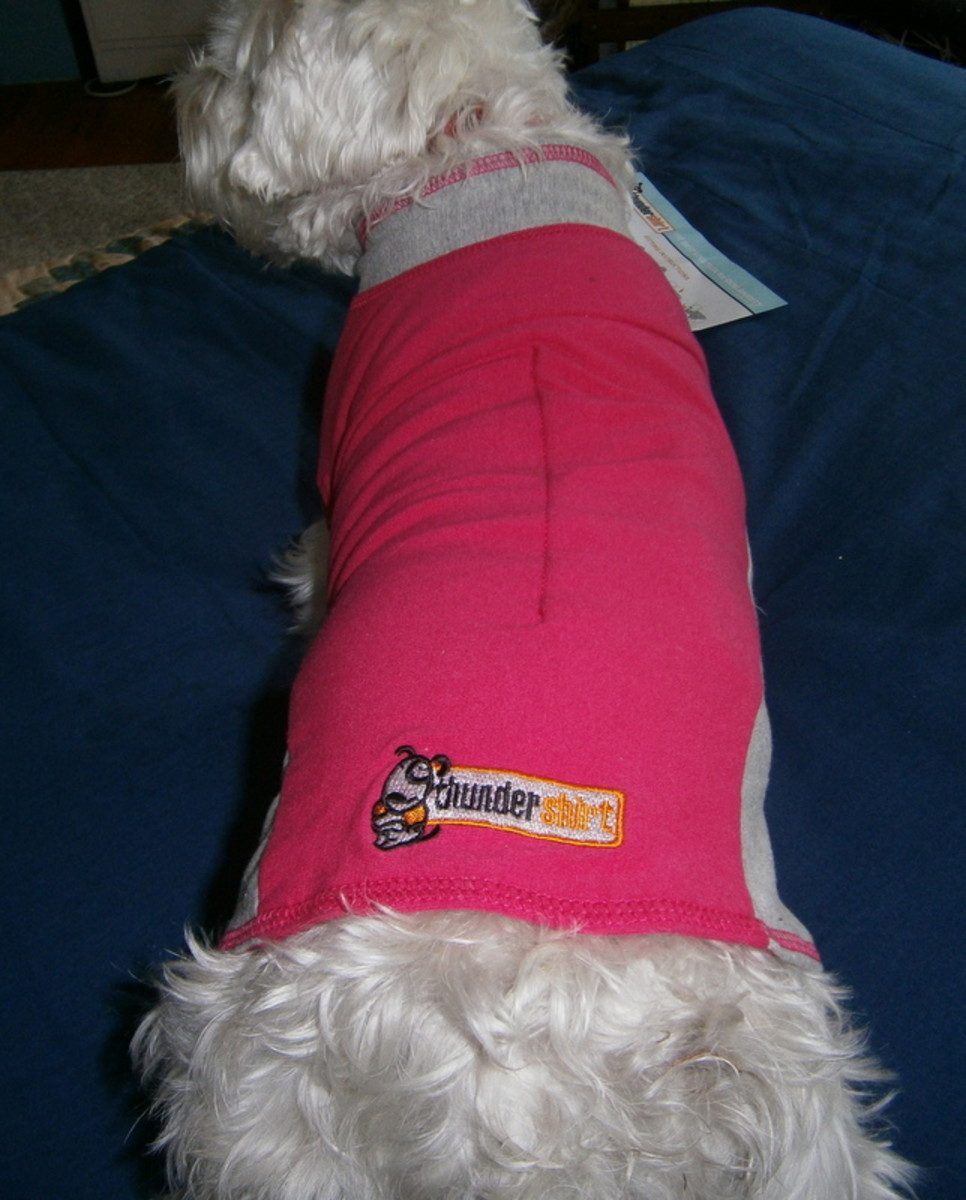How To Know If Your Dog Is In Pain And What To Do About It - With Pictures

Dogs and humans share a special bond unseen anywhere else in nature. While humans have domesticated animals since prehistoric times, dogs are some of the select few animals that were not kept as food or mere tools, but also as companions. Dogs have evolved to be the way they are today thanks to humans, as we had (and still have) a huge impact on their lifestyle and breeding.
Not only have we affected them, but they have affected us. In them we found loyal companions we exemplify the purest form of love one can have for another creature, that sometimes translates to a childlike affection and admiration combined with unshakable loyalty. As such, we have come to see them as more than just an animal, but as true friends and members of our family.
However, despite thousands of years of coexistence, dogs are clearly not human, and thus do not express themselves in the same ways, including when they're feeling pain. As such, its necessary that any responsible dog owner knows the signs that a dog exhibits when they are diseased or in pain, so that proper care can be given to our beloved four legged friends.
Signs To Watch Out For

Its important to keep an eye out for several different changes in your dog's behavior. A dog in pain may suddenly start doing something he didn't normally do before, stop doing something he used to do often, or do something he already did more or less often.
These behaviors can translate into physical action or purely behavioral changes. As such, its no wonder that the people who first find out there's something wrong with a dog are those who spend more time with said animal, since this person often witnesses most of the dog's actions during the day.
Its also important to pay attention to how dogs eat, sleep and take care of their general necessities.
1 Eating And Sleeping Habits

While many domestic dogs tend to exhibit some lazy behavior once in a while, a dog that sleeps too often can be often signaling that there's something wrong with him.
Dogs, like many animals, instinctively detect pain as some sort of injury and try to move less and sleep more in order to hasten the healing process. While wild animals may try to eat more when they're hurt in a way that does not incapacitate them, so their body can absorb more nutrients and thus heal better, domestic dogs are usually well fed, so they'll just try to "sleep it off".
Of course, this doesn't mean your dog will simply heal by itself by sleeping a lot, or even that he's actually hurt in the general sense. A dog that experiences pain due to issues not directly associated with injury will also try to sleep more often, in an attempt to alleviate pain which increases when he moves around.
Additionally, a dog's eating behavior can also change when he's in pain. Loss of appetite can often be a symptom of stomach pain or parasite infection, or even toothache!
If your dog suddenly seems disinterested in eating according to his normal meal schedule, but seems hungry at other times, it can also be a sign of issues which cause intermittent pain, infections and disease.
A dog that doesn't eat well is bound to only get worse, so if your pet is behaving like this, consider taking him to a veterinarian as soon as possible!
2 Altered Breathing
Have you noticed you dog panting often despite being mostly immobile? It may be a sign of pain or other issues.
Dog often pant to increase the exchange of gases in their bodies. This allows them to recover stamina, stabilize blood flow and pressure, and vent some extra heat. However, when the panting seems irregular or overly slow, and if the breathing sounds oddly or seems shallow, it may mean that your dog suffers pain while breathing, which can be indicative or lung related conditions.
Additionally, if you dog prefers to breathe through the mouth almost all the time, it can also mean that the nose canal may be infected or clogged. Difficulty while drinking water can also be indicative of a dog that has problems maintaining normal breathing.
All of this can be caused by diseases or even swallowing/inhaling a foreign object. It can also be indicative of broken ribs or chest injury, as that can interfere with the expansion and contraction of the ribcage while breathing.
3 Constant Grooming Of A Specific Part
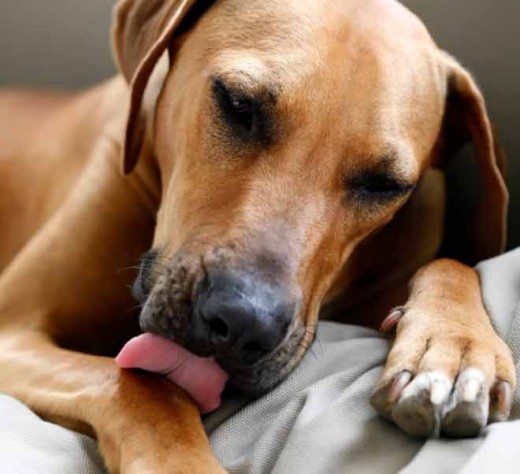
Most animals often lick their injuries in an attempt to soothe pain and clean the wound, and dogs are no different. While dogs do in fact groom themselves often (though not as much as cats), its important to be able to tell when your dog is grooming himself a bit too often, or rather, grooming and licking a specific part much more often than others.
A dog that often licks one specific paw may have an injury in said paw that he's trying to soothe. In fact, no external injury is required, as things such as internal or muscle pain can also cause this behavior. Even if your dog is not limping, his paw may still be hurting in some way, or maybe just when he stops moving, as is common with some kinds of muscle pain.
Additionally, a dog that often tries to scratch a specific place of his body may be suffering from a stubborn local infestation of fleas or even skin infections. Parasites are a common cause for this behavior.
Female dogs may also exhibit this behavior after having giving birth in one point of their lives, as the dog's teats can get infected, which results in itching, causing the dog to be constantly licking them. Feeding puppies can sometimes damage the mother's mamary gland, and this can lead to infection in the long run.
Some Advanced Pet Care Systems
4 Angry Behavior And Excessive Vocalization
When normally quiet dogs suddenly become aggressive, you know there's something wrong. No matter how domesticated your dog may be, it is still an animal. As such, its survival instincts can be triggered at certain times.
A dog that is in pain or injured in some way may suddenly become less friendly and even aggressive. This is a defense mechanism taken from wolves. Ever heard the phrase "mad like a wounded animal"? Well, there's a lot of truth in those words.
You see, wounded animals often become more aggressive as they feel their life is threatened, and that they're vulnerable to a possible predator or aggressor. Wounded wild wolves in packs often become more aggressive to keep away any other males that may try to take their status in the pack or get rid of them. As such, while in pain, your dog may become more aggressive as his natural survival instinct kicks in, even if you never harmed him in any way.

If a normally quiet dog suddenly starts vocalizing more, it may be indicative or an issue. Of course, most dogs love to bark, but if your dog suddenly starts growling or whimpering for no apparent reason, its a clue that he may be in pain. This can be often accompanied with a specific action, such as squinting, which is a clear indicative of pain in dogs.
However, when there's no action involved, the cause of the vocalizations can be hard to detect, but it can be indicative of serious internal health problems, so visit a veterinarian as soon as possible!
5 Emotional Withdraw Or Constant Affection Seeking

Dogs are very emotional beings, and like children, will often try and gain affection from you when they feel bad, physically or emotionally. Dogs in pain who spend a lot of their time with a certain owner will often seek that person's attention. This behavior is interesting because it is not often observed in the wild among wolves and wild dogs.
A dog that suddenly becomes very clingy and attention seeking can often be sick or in pain, and tries to stay as close as possible to its owner in order to feel more protected.
This is not the same for all dogs, though. Other dogs will simply try to isolate themselves when sick or in pain, and actively try to avoid contact with other beings. This is due to the dog's natural self preservation instinct. You see, in the wild, its not good to look weak or sick, as this often invites predators, since a weak prey is easier to catch.
If your dog suddenly starts avoiding you for no apparent reason, consider consulting a professional.
Author's Comments
As with any other instructional hub, this is not meant to substitute the advice of a trained professional in any way. It is only meant to inform dog owners of the signs that can be indicative of pain in their pets.
When in doubt, always consult a certified veterinarian.



